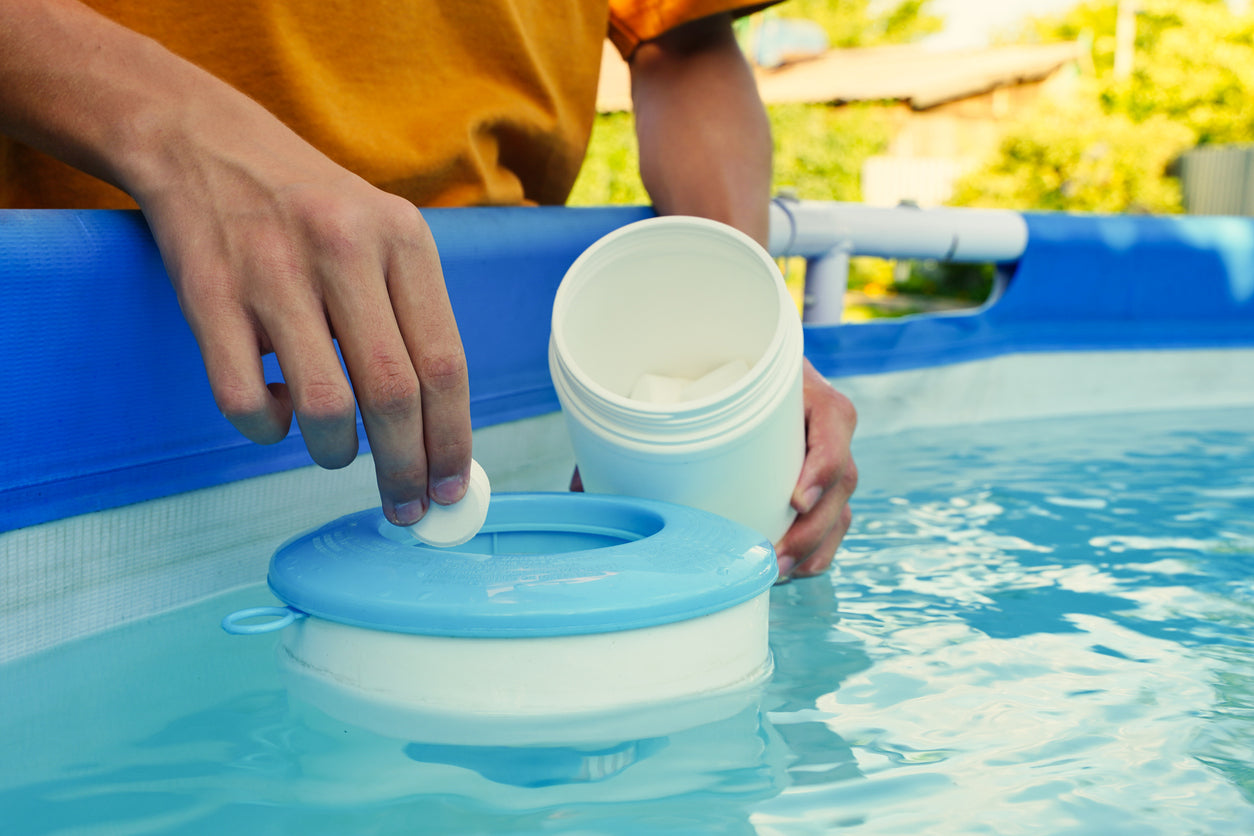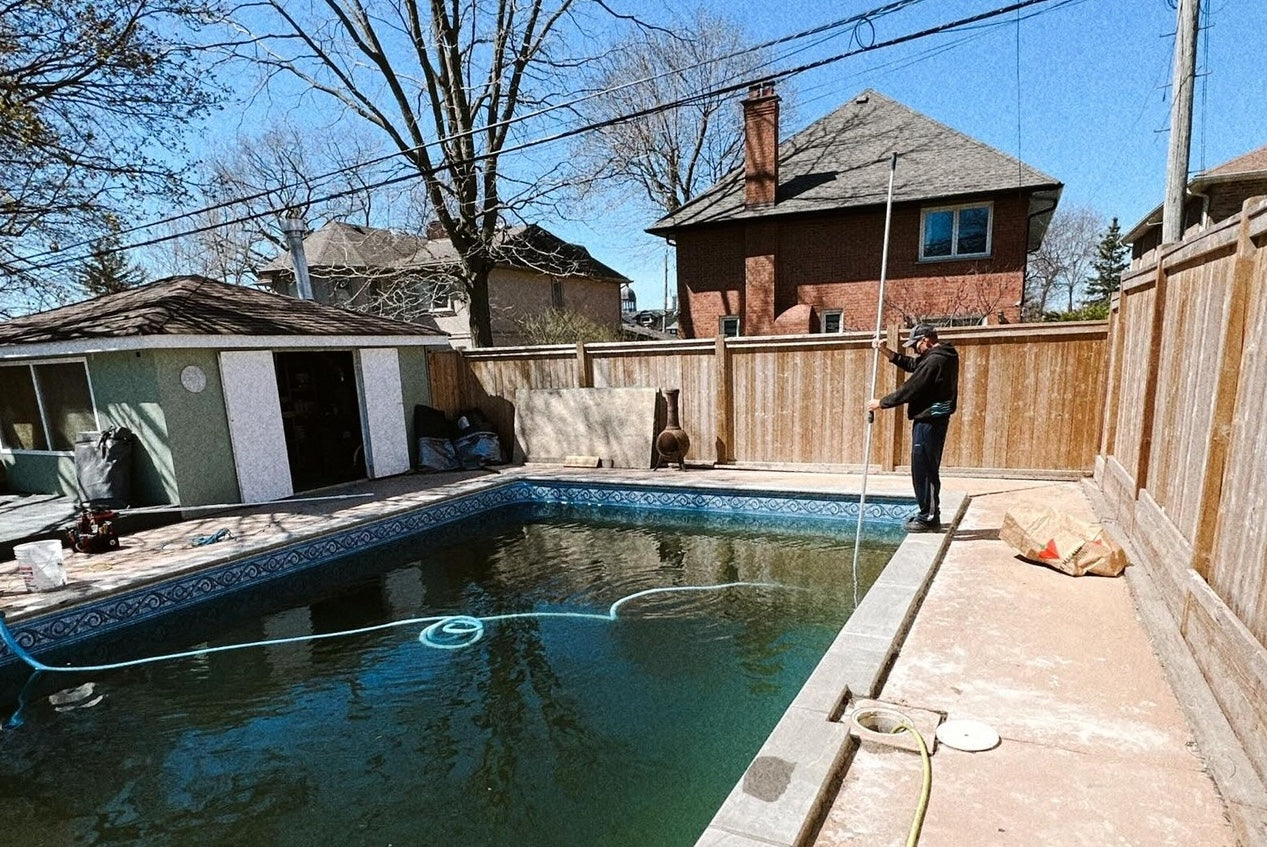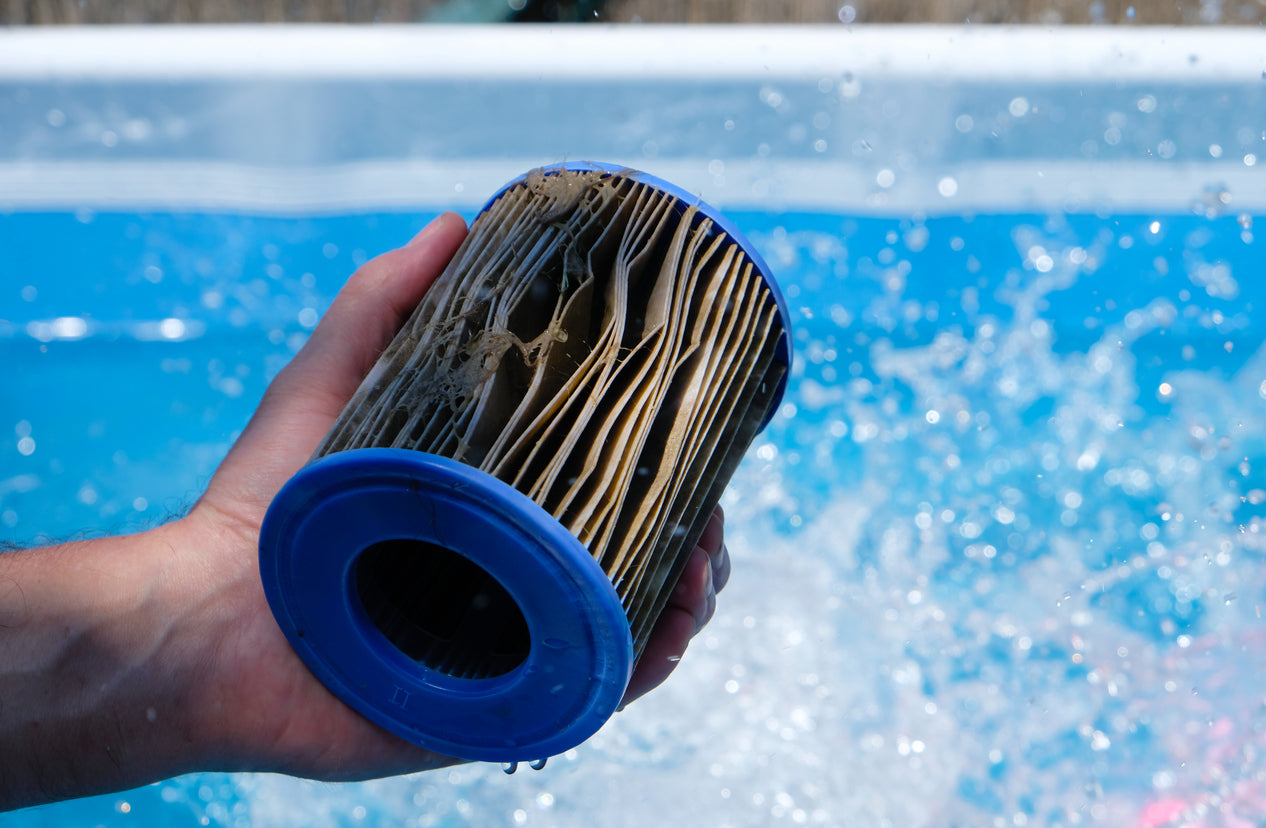Maintaining the right pool water chemistry is essential for keeping your swimming pool clean, clear, and safe. Whether you own an inground or above-ground pool, understanding the basics of pool chemistry helps prevent algae growth, keeps your water balanced, and ensures that your pool is always ready for a swim.
In this guide, we’ll cover everything you need to know about pool water chemistry, including key water balance factors, how to test and adjust your levels, and expert tips to keep your pool in top condition all season long.
Why Pool Water Chemistry is Important
Proper pool water chemistry is not just about having crystal-clear water—it directly affects your pool’s longevity, swimmer health, and the effectiveness of sanitizing chemicals. Here’s why maintaining balanced pool water is crucial:
- Prevents Bacteria and Algae Growth – Proper chemical levels eliminate harmful bacteria and prevent algae from taking over your pool.
- Protects Pool Equipment – Balanced water helps prevent corrosion or scale buildup on pumps, filters, and other components.
- Enhances Swimmer Comfort – Poorly balanced water can cause skin irritation, eye redness, and a strong chlorine smell.
- Extends the Life of Your Pool – Unbalanced water can damage the pool liner, plaster, and other surfaces over time.
The Key Components of Pool Chemistry
Understanding the major factors of pool water chemistry will help you keep your pool properly balanced. Here’s a breakdown of the essential elements:
1. pH Level (Ideal Range: 7.2 – 7.6)
The pH level determines how acidic or basic your pool water is. If your pH is too low, the water becomes acidic, leading to corrosion of metal components and irritation for swimmers. If it’s too high, chlorine becomes less effective, and scale deposits can form.
How to Adjust pH:
- If pH is too low: Add sodium carbonate (soda ash) to raise it.
- If pH is too high: Use sodium bisulfate (dry acid) or muriatic acid to lower it.
2. Total Alkalinity (TA) (Ideal Range: 80 – 120 ppm)
Alkalinity acts as a pH buffer, preventing sudden fluctuations in pH levels. If alkalinity is too low, your pH can shift dramatically, making it difficult to maintain balance.
How to Adjust Total Alkalinity:
- If TA is too low: Add sodium bicarbonate (baking soda).
- If TA is too high: Use muriatic acid or dry acid to bring it down.
3. Chlorine (Sanitizer) Levels (Ideal Range: 1.0 – 3.0 ppm)
Chlorine is the most common pool sanitizer, killing bacteria, viruses, and algae. It’s available in various forms, including liquid, granular, and tablet forms.
How to Maintain Chlorine Levels:
- Use chlorine tablets in a floating dispenser or automatic chlorinator for steady levels.
- Shock the pool weekly with calcium hypochlorite or sodium dichlor to eliminate contaminants.
4. Calcium Hardness (Ideal Range: 200 – 400 ppm)
Calcium hardness helps prevent water from becoming too corrosive or causing scale buildup. If calcium levels are too low, the water may leach minerals from surfaces, leading to damage.
How to Adjust Calcium Hardness:
- If calcium is too low: Add calcium chloride.
- If calcium is too high: Dilute pool water with fresh water.
5. Cyanuric Acid (Stabilizer) (Ideal Range: 30 – 50 ppm)
Cyanuric acid (CYA) helps protect chlorine from being broken down by the sun’s UV rays. Without stabilizer, chlorine dissipates quickly, making it difficult to maintain proper sanitization.
How to Adjust Cyanuric Acid:
- If CYA is too low: Add stabilizer (cyanuric acid).
- If CYA is too high: Dilute pool water by partially draining and refilling with fresh water.
6. Salt (For Saltwater Pools) (Ideal Range: 2700 – 3400 ppm)
If you have a saltwater pool, maintaining the right salt levels is essential for your salt chlorinator to produce chlorine effectively.
How to Adjust Salt Levels:
- If salt is too low: Add pool-grade salt.
- If salt is too high: Dilute with fresh water.
How to Test Your Pool Water
Regular water testing is the key to keeping your pool chemistry balanced. Here’s how to test your pool water effectively:
- Use Test Strips or a Liquid Test Kit – Dip test strips into your pool or use a liquid kit to get an accurate reading of chemical levels.
- Test at Least Twice a Week – Check pH, chlorine, and alkalinity regularly.
- Take a Sample to a Pool Store – For more precise readings, have your water professionally tested every month.
Expert Tips for Keeping Your Pool Water Balanced
- Shock Your Pool Weekly – Regularly shocking your pool prevents bacteria and algae buildup.
- Maintain Proper Filtration – Run your pump at least 8–12 hours a day to circulate and filter the water.
- Keep an Eye on Weather Changes – Heavy rain or extreme heat can affect your pool chemistry, requiring adjustments.
- Use Algaecide as Needed – If you notice algae forming, apply an algaecide along with proper chlorine levels.
Common Pool Water Issues and How to Fix Them
| Problem | Cause | Solution |
|---|---|---|
| Cloudy Water | High pH, high calcium, or poor filtration | Adjust pH, shock the pool, clean filter |
| Green Water | Algae growth | Shock the pool, brush walls, use algaecide |
| Burning Eyes | Low pH or high chloramines | Adjust pH, shock the pool |
| Scaling on Pool Surfaces | High calcium hardness | Lower calcium or dilute water |
Conclusion
Maintaining the perfect pool chemistry requires regular testing, proper chemical adjustments, and consistent cleaning. By following this guide, you’ll keep your pool water safe, balanced, and enjoyable all season long. If you need expert assistance, Main Street Pool & Spa offers free water testing and a full selection of pool chemicals and equipment to keep your pool in top shape.
Need Help with Pool Chemistry?
Visit Main Street Pool & Spa today or contact us for expert advice and products to keep your pool water perfect!



Leave a comment
This site is protected by hCaptcha and the hCaptcha Privacy Policy and Terms of Service apply.